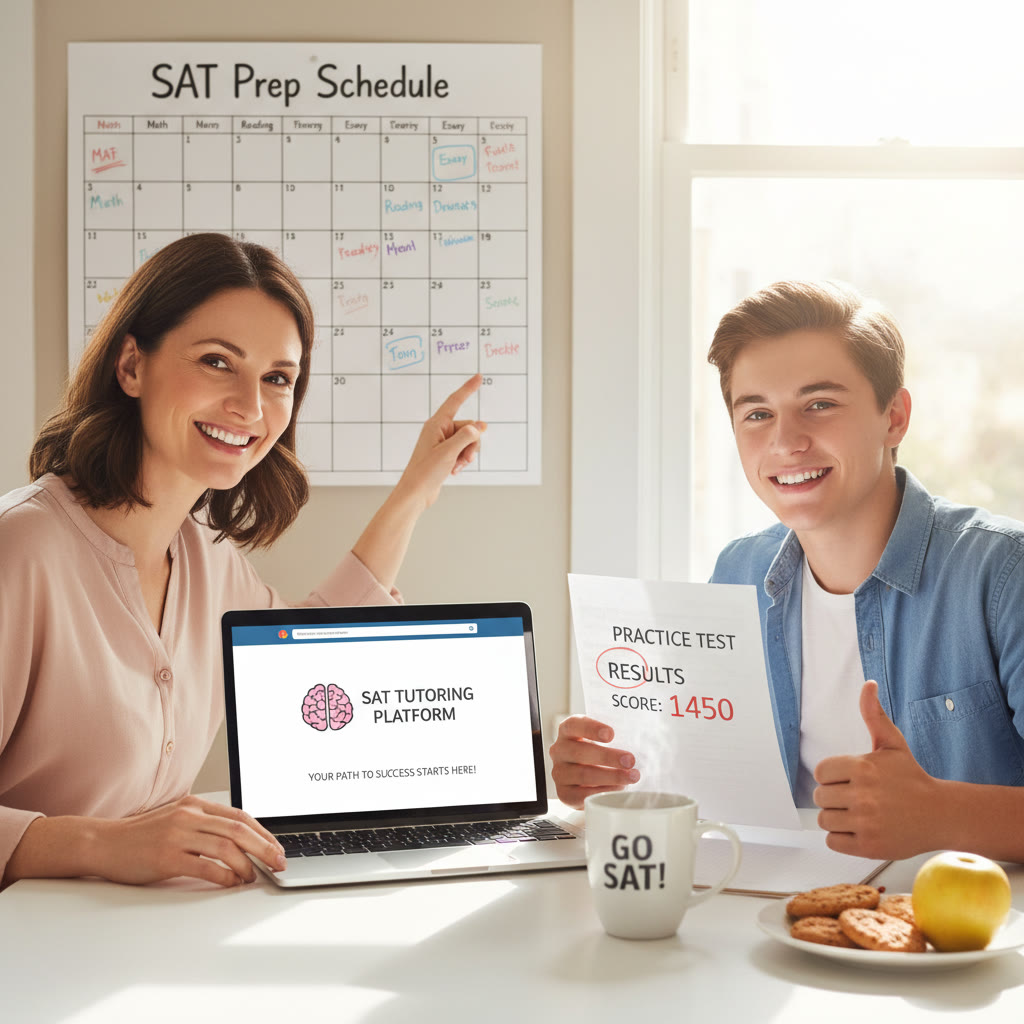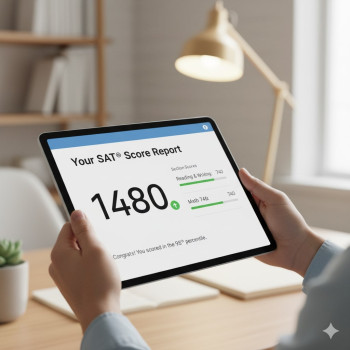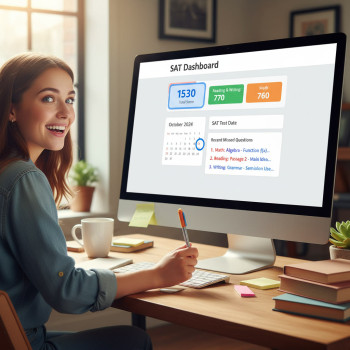Welcome — Let’s Make the SAT and USC Fit Together
If you or your student are thinking about the University of South Carolina (USC), you probably have a swirl of questions: Does USC require the SAT? What score should I aim for? When should I take the Digital SAT? How will scores affect admission and scholarships? This guide is written for students and parents who want straightforward, up-to-date, and human advice — plus practical next steps you can act on this week.

Quick Answers Up Front
Here are the essentials in one short snapshot so you can breathe and plan:
- USC considers SAT/ACT scores when submitted but has adopted flexible policies that make testing optional for many applicants; however, strong scores can strengthen your application and scholarship chances. ([bigfuture.collegeboard.org](
- Typical middle 50% SAT range for admitted students at USC (Columbia) sits roughly in the low 1200s to mid 1300s on the old scale — set a realistic target within or above this band depending on your major. ([bigfuture.collegeboard.org](
- Deadlines: regular application cycles and key dates (e.g., early action/decision and regular deadlines) matter; matching test timing to those deadlines is critical. ([bigfuture.collegeboard.org]( USC’s Test Policy: Test Optional, But Strategic
Over the last few years, many universities—including USC—have adjusted SAT/ACT policies. USC generally considers test scores if you submit them, but many applicants are not required to submit scores. That doesn’t mean the SAT is irrelevant: a strong score can compensate for weaker parts of an application, make you more competitive for certain scholarships, and help admissions officers understand academic readiness.
Think of the SAT as a tool in your toolkit — optional in some cases, but often useful. If your GPA and coursework are stellar, and your extracurriculars tell a compelling story, a no-score application can still be competitive. Conversely, a very strong SAT can lift an application that might be borderline by GPA alone.
When Submitting SAT Scores Helps
- You want to strengthen a lower GPA or non-traditional course load.
- You’re pursuing a competitive major (engineering, business, or honors programs) where quantitative evidence helps.
- You’re aiming for merit scholarships that use standardized scores in their formulas.
What Score Should You Target for USC?
Admission statistics typically present a middle 50% score range for enrolled students. For USC (Columbia), that range generally centers in the roughly 1190–1370 SAT area — a helpful benchmark to set your goals. If your score is within or above this range, your application will be stronger on that dimension; if it’s below, consider submitting additional context (like upward grade trends) or retaking the test. ([bigfuture.collegeboard.org]( to Pick a Realistic Target
Set two scores: a reach target and a safety target. For example:
- Safety target: score at or slightly above the lower bound of USC’s middle 50% (so you’re comfortably within the applicant pool).
- Reach target: score near or above the upper bound — useful for scholarship consideration and selective programs.
Timing the Digital SAT: When to Take It
Timing is everything. Map the SAT test dates to USC application deadlines — take the test early enough to allow for a retake if needed. For many students, junior spring and senior fall are the most practical windows. If you’re applying Early Action/Early Decision, aim to have scores ready before those earlier deadlines.
Suggested Timeline
When Why Action End of sophomore year / early junior year Get baseline: PSAT or diagnostic digital SAT Take a practice test and set baseline targets Junior spring Peak preparation window; time for a first official test Take official Digital SAT; evaluate results Summer before senior year Focused study and targeted score improvement Use practice schedule or tutoring for targeted weaknesses (e.g., math or reading) Senior fall (if needed) Final chance to boost score before application deadlines Retake Digital SAT; finalize which scores to send How USC Uses SAT Scores in Admissions and Scholarships
Universities often weigh SAT alongside GPA, coursework rigor, essays, recommendations, and extracurriculars. For USC, scores are considered when submitted — meaning they may influence admission decisions and scholarship awards. For merit-based scholarships, numerical cutoffs or score bands can sometimes play a role, so a higher SAT can directly increase scholarship competitiveness.
Admissions officers build a holistic picture: SAT is one piece of evidence about academic readiness. Use it strategically — submit a score if it strengthens your narrative.
Practical Example
Imagine two applicants with similar GPAs. One has a very strong AP/IB course load and an SAT score in the upper band of USC’s range; the other has fewer advanced courses and no SAT submitted. The first applicant gives the admissions team clearer quantitative evidence of readiness for rigorous college work. That edge can matter for certain majors or scholarship committees.
Preparing for the Digital SAT: Smart, Practical Strategies
Preparation is not about rote hours; it’s about focused practice and smart feedback. Here’s a study framework that works:
1. Diagnose, Don’t Guess
- Start with a full-length digital practice test under timed conditions.
- Identify highest and lowest scoring sections and question-types that trap you.
2. Build a Weekly Study Plan
- Short, consistent sessions (4–6 focused blocks per week) beat marathon cram sessions.
- Rotate skills: one day quantitative reasoning, one day evidence-based reading, one day essay/command-of-evidence practice (if applicable), and a mixed practice test every 2–3 weeks.
3. Practice With Purpose
- Work backward from your target score: calculate how many points you need to improve per section.
- Focus on question types that lower your accuracy and practice targeted drills.
4. Get Human Feedback
Self-study is powerful, but targeted guidance accelerates gains. Personalized tutoring — like Sparkl’s 1-on-1 tutoring — offers tailored study plans, expert tutors who identify subtle pattern errors, and AI-driven insights to track progress. Sparkl can be particularly helpful when you need a customized plan to close a specific point gap before deadlines.
Choosing Whether to Submit Scores: A Decision Checklist
Not sure whether to send SAT scores to USC? Run through this checklist and be honest:
- Is your SAT at or above the middle 50% range for USC? If yes, strongly consider sending. ([bigfuture.collegeboard.org](
- Does your SAT meaningfully strengthen areas where your application is weaker (e.g., GPA or course rigor)? If yes, send it.
- Are you applying for scholarships that consider standardized scores? If yes, check award criteria and consider sending scores.
- Do you have a compelling alternative narrative (exceptional portfolio, research, or talent) that makes scores unnecessary? If yes, weigh the trade-offs.
Common Student Questions — Answered
Is the Digital SAT different from the paper SAT?
Yes — the Digital SAT is shorter, adaptive in sections, and delivered on a secure testing platform. But the skills assessed (math, reading, writing evidence) are consistent. Practice on digital formats to be comfortable with navigation and timing.
How many times should I take the SAT?
Most students take it 1–3 times. Take it once after a solid preparation block to establish a baseline and a second time after targeted improvement. For many, two well-prepared attempts are enough.
Can Sparkl tutoring make a measurable difference?
Personalized tutoring often shortens the improvement timeline by focusing on the exact topics where students lose points. Sparkl’s 1-on-1 guidance, tailored study plans, expert tutors, and AI-driven insights can turn a scattershot study approach into a targeted plan — a practical advantage when you have limited time before a deadline.
Putting Scores Into Your Application Strategy
Create a simple admissions dashboard: list each college (including USC), note whether tests are optional/required, record middle 50% score ranges, and list scholarship thresholds. This visual helps you decide where to invest prep time and whether an SAT submission will be an asset.
Sample Admissions Dashboard (Excerpt)
School Test Policy SAT Middle 50% Deadline University of South Carolina (Columbia) Test optional / considered if submitted ~1190–1370 Regular (Dec 1) / Early (Oct 15) — check each cycle Other target school Varies Set per school Check school site Test Day and Score Submission Tips
- Take an official practice digital SAT under timed conditions in the week before the test to familiarize yourself with the platform.
- Decide in advance which test dates will allow a retake before application deadlines.
- Check USC’s application portal instructions for score reporting — if you submit, follow the school’s preferred method and consider sending your highest superscore if that benefits you.
- Keep calm: good rest and routine in test week impact performance more than last-minute cramming.
What Parents Can Do to Help (Without Stressing Out Everyone)
- Provide structure: help create a study calendar, block out practice times, and celebrate progress.
- Encourage breaks and balance: mental health is an admissions asset, not a liability.
- Explore tutoring options together: if the student needs focused help, look for programs that offer personalized plans and measurable mileposts (Sparkl’s approach is an example of this type of targeted support).
- Keep conversations about outcomes constructive — focus on growth and fit more than a single number.

Final Checklist Before You Apply
- Confirm USC’s current test policy and deadlines for the application cycle you’re applying to; policies may change year to year. ([bigfuture.collegeboard.org](
- Decide whether to submit SAT scores based on your dashboard and checklist.
- If submitting, ensure your highest/superscore is reported according to USC’s preferences and scholarship rules.
- If you need help closing a score gap, consider targeted 1-on-1 tutoring with a clear plan and measurable milestones (for many students, personalized tutoring and AI-driven progress tracking are game-changers).
Closing Thoughts — Calm, Confident, and Prepared
Applying to the University of South Carolina is an exciting step. The SAT is one part of your story — sometimes optional, often useful. Use data (target score ranges), honest self-assessment, and smart preparation to decide your path. If a tailored plan or focused practice would help, consider tutoring options that give you one-on-one guidance, targeted study plans, and progress tracking to make the most of your preparation time.
Above all, remember admission is about match and fit. A thoughtful, well-rounded application — underpinned by a score that reflects your best work — is the most persuasive one you can submit.
Need a Next Step?
Take a full digital practice test and compare your scores to the USC target range. If you want help interpreting results and building a custom plan to reach your target, consider scheduling a short consultation with a tutor who can create a tailored study plan and help prioritize improvements in the months before your deadline.
Good luck — you’ve got this. Plan deliberately, practice smartly, and let each step move you closer to the University of South Carolina or whatever campus feels like the right fit.


















No Comments
Leave a comment Cancel